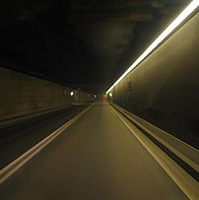The new railway tunnels of Frejus and Gothard: a political and institutional comparative analysis
Abstract
Projects of the two new railway transalpine tunnel of Frejus and Gothard have similar technical characteristics: an identical length (57 km), a similar cost (10 billion Euros) and the existence of a highway along the same Alpine corridor. But, whilst the new Gothard is now under construction and should become operational in 2017, the new Frejus is at standstill at preliminary phases and has faced a very strong local opposition on the Italian side of the Alps. This difference can be explained by analysing the political and institutional framework of the two projects. The new Swiss tunnel is integrated into a national scheme of transport policy which is based on: the development of a new system of railway infrastructures, which features two new transalpine tunnels (the new Gothard and the Loetschberg); the implementation of a distance-related heavy vehicle fee, which is levied on the basis of total weight, emission level and the kilometres driven; the provision of financial resources to stimulate the transfer of transalpine freight from road to railway. The approval of such a scheme started twenty years ago: it was based on a constitutional decree, implemented through several Federal acts and supported by three confirmatory referenda. The new French-Italian infrastructure is not integrated in any transport policy scheme. The new tunnel is only partially consistent with the overall goals of the European transport policy and the Transport Protocol of the Alpine Convention (which has not yet been ratified by the Italian Parliament): actually no action for modal shift is envisaged. Moreover, the new tunnel was initially supported by a structured consultative and participative procedure – based on the ‘débat public’ technique – only in France. In Italy this megaproject was not backed by an effective deliberation process, neither at the local nor the national level; on the contrary: it was considered among the strategic projects of the so-called ‘Legge obiettivo’ and therefore it could bypass the ordinary administrative procedures (and the otherwise mandatory environmental impact assessment). The late creation of a consultative committee (the so-called ‘Commissione Virano’) and the implementation of participative procedures have not been always consistent and has not proved valid to stop the fierce opposition to the project.
Downloads
References
ARE – Ufficio federale dello sviluppo territoriale (2010). Equa ed efficace – La tassa sul trasporto pesante commisurata alle prestazioni (TTPCP) in Svizzera. Berna
Ecoplan e Infras (2011). Wirtschaftlichkeitsstudie NEAT 2010 - Schlussbericht (Studio di fattibilità NFTA 2010 - Rapporto finale). 28 marzo 2011, Berna e Zurigo. (Scaricabile da: http://www.bav.admin.ch/alptransit/).
Giorgi L. e Schmidt M. (2005). Transalpine transport: a local problem in search of European solutions or a European problem in search of local solutions? Transport Reviews, 25: 201-219.
Greyl L., Healy H. e Temper L. (in pubblicazione). High speed transport infrastructure in Italy. Economics and Policy of Energy and the Environment.
Marletto G. (2010). Transalpine transport policies: towards a shared approach. International Journal of Transport Economics, 38: 353-370.
Ollivier-Trigalo M. (2001). The implementation of major transport projects: conflicts and coordination, in: L. Giorgi and R. Pohoryles (eds.) Transport policy and research: what future? Aldershot, Ashgate.
Prud’homme R. (2007). Essai d’analyse coûts-bénéfices du tunnel ferroviaire Lyon-Turin. Mimeo, 4 giugno 2007. (Scaricabile da: http://www.rprudhomme.com/resources/2007+ACB+Lyon-Turin.pdf).
PSAC - Permanent Secretariat of the Alpine Convention (2007). Transport and Mobility in the Alps. Report on the State of the Alps, Innsbruck.
Rui S. (2004). Transport policy and public involvement : concertation between mobilization and frustration. Innovation : The European Journal of Social Science Research, 17: 129-144.
UFT – Ufficio federale dei trasporti (2011a). Grandi progetti ferroviari. 30 giugno 2011, Berna.
UFT – Ufficio federale dei trasporti (2011b). Alpinfo 2009. 21 gennaio 2011, Berna.

Copyright (c) 2014 Tema. Journal of Land Use, Mobility and Environment

This work is licensed under a Creative Commons Attribution 4.0 International License.
Authors who publish in this journal agree to the following:
1. Authors retain the rights to their work and give in to the journal the right of first publication of the work simultaneously licensed under a Creative Commons License - Attribution that allows others to share the work indicating the authorship and the initial publication in this journal.
2. Authors can adhere to other agreements of non-exclusive license for the distribution of the published version of the work (ex. To deposit it in an institutional repository or to publish it in a monography), provided to indicate that the document was first published in this journal.
3. Authors can distribute their work online (ex. In institutional repositories or in their website) prior to and during the submission process, as it can lead to productive exchanges and it can increase the quotations of the published work (See The Effect of Open Access)
